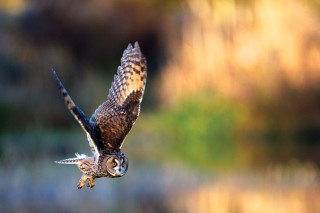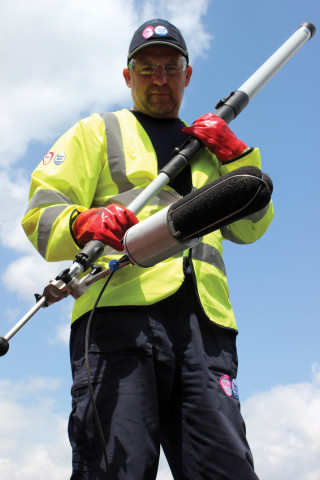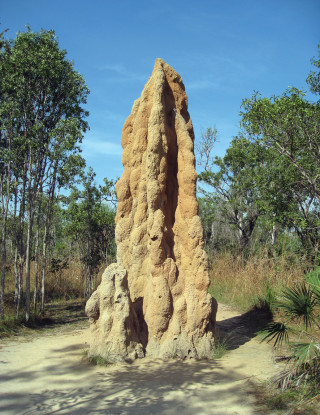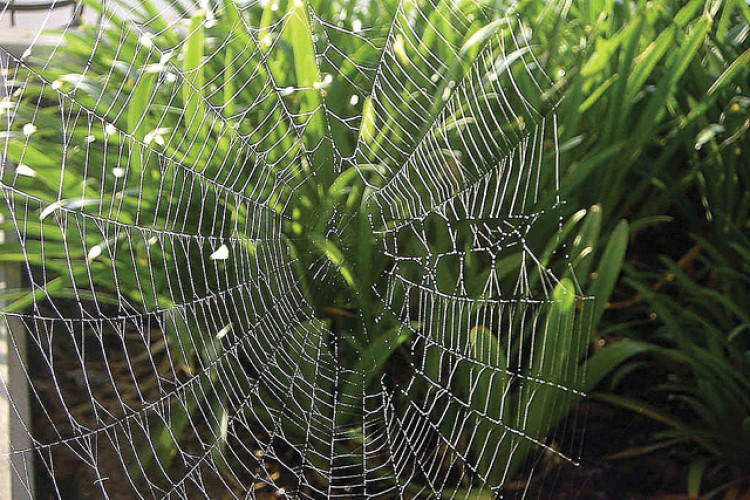One of the most Shared, re- Tweeted and Liked items on The Construction Index website in 2015 – and possibly ever – was an 18th August report on how engineers were studying owls to see what lessons they could teach us. The long-eared owl is, it seems, naturally one of the stealthiest creatures on the planet. Most birds make a noise when they flap their wings but not owls; they can fly up to their prey from behind and remain completely undetected until the last instant.
A study at Dalian University of Technology in China, written up in the Institution of Civil Engineers (ICE) journal Bioinspired, Biomimetic and Nanobiomaterials, compared the behaviour of the primary feathers of a long eared owl, a golden eagle and a pigeon during flight. All three birds, while differing in size, have a similar flapping style in flight. Using laser displacement sensors and high-speed cameras, amplitude-time analysis results indicated that loss factors of the long-eared owl’s complete primary feathers and barbs are higher than those of golden eagle and pigeon feathers. Vibration amplitudes of the owl feathers and their barbs therefore decay much faster, showing a superior vibration-damping characteristic. Consequently, mechanical noise caused by the relative motion of the owl primary feather structures during flight may be effectively suppressed.

Engineers hope to be able to take these findings and translate them into benefits for civil structures. If wind turbine blades, for example, were more like owl feathers, they could rotate more quietly. Research team leader Professor Jinkui Chu said: “Many owls have a unique and fascinating ability to fly so silently that they are out of their prey’s hearing range, due to their feather structure. This behaviour has long been of interest to engineers, as we seek to apply the owl’s noise-reduction mechanisms to other purposes and situations that benefit society. “Now however, we know the owls’ silent flight ability is even more superior than we thought, you could say of all birds it is the ‘king of acoustic stealth’. It not only manages to suppress aerodynamic noise when gliding, but also mechanical noise caused by vibration during flying.”
This is remarkable, considering the sudden jumping, bending and twisting the owl’s wings are subjected to when flapping and the noise that this creates in other birds. In the scientific world, the process used to eliminate this mechanical noise is called ‘damping’ – which means the extraction of mechanical energy from a vibrating system usually by converting it into heat and allowing it to remain steady. “Our research showed the long eared owl has superior ‘damping’ skill – meaning it can remain mind-blowingly stable and eliminate mechanical noise caused by the movement of its feathers – quite a feat of engineering,” says the Professor. “This study will hopefully provide further insight into the owls’ silent flight mechanism and help engineers develop ideas for special materials or structures such as on-shore wind turbines, where similar noise elimination can be applied.”
Should this research really lead to quieter wind turbines, it would certainly not be the first time that civil engineers have looked to the natural world for inspiration. Nature has a literally endless supply of lessons for engineers and architects. Gustave Eiffel took inspiration from the human skeleton, while Crystal Palace designer Joseph Paxton learned how to distribute loads from observing how water lilies spread across the surface of a pond. More recently, the natural sonar sensing skills of bats are the inspiration behind a pipeline inspection system called SewerBatt (pictured below), which is used by Lanes Utilities to assess the condition of sewers.
The SewerBatt inspection programme has been in operation across the Thames Water region since the start of May, following an 18-month development and trial phase. The system uses exactly the same echo- location principles that bats use. It sends multi-frequency sound waves along sewer lines. Their interaction with chambers, lateral connections, cracks, deformities or blockages sends unique echoes back to the ‘bat brain’. Within 30 seconds (not nearly as quick as a real bat, of course) the system’s software analyses the data from each length of pipe and provides a simple output assessment of its condition. For planned sewer maintenance, the technology is already reducing the number of CCTV drainage surveys required by 33%. The target is to reduce overall CCTV costs at Thames Water by £1.2m per year. “The technology is very new but it has huge potential,” says Lanes project manager Dean Hansford.

Civil engineers have always sought to exploit the natural world for man’s benefit, taking natural raw materials to build roads and bridges or to fuel power stations; or adapting the natural forces of the sun, tides and waterways to generate electricity. In recent times, there has been a recognition that with global population growth comes a responsibility not to exploit the natural world so much that the ecosystem and natural order of things suffers irreparable adverse impacts. The key word here is sustainability, and some of the best lessons in sustainability come from the animal kingdom. Civil engineer Thomas Michael Wallace has addressed the topic of ‘civil engineering animals’ in a post on his entertaining Being Brunel blog. He lists as his top five favourites: termites, prairie dogs, spiders, chimpanzees and beavers.
Termite skyscrapers regularly reach the human equivalent of 2km high, he says, while prairie dogs have been known to dig underground habitation networks covering many square kilometres. More familiar to most of us among the constructions of the animal kingdom are spiders’ webs.


Beavers are also famously busy builders of dams. “Arguably beavers truly are the civil engineers of the animal kingdom as their works significantly affect the local ecosystem; creating a true built environment where even other animals flourish,” Wallace writes, additionally noting their significant adoption on the crest of the Institution of Civil Engineers. Apparently the world’s longest recorded beaver dam is twice the length of the Hoover Dam.
The position of chimpanzees on Wallace’s list is rather more tenuous, based on their nest- building ability up in the trees. More common animals, including wasps and most species of birds, could lay equal or greater claim to nest construction skills.
Of these five, it seems that beavers may have already passed on their lessons to man. As Wallace says: “Perhaps most fascinating is how similar the construction of a beaver dam is to ours, including spillways, adding curvature to resist high flows and improvised cofferdams from trees driven into the river bed like piles.” The animal here that may still offer us the greatest lessons, should we be able to learn them, is the spider. Spider’s silk is remarkably tensile, proportionately stronger than any steel yet produced. The silk first softens and then stiffens when pulled. What is more, webs are built using only the amount of material required to capture the target prey. Recent research by Massachusetts Institute of Technology and Harvard University into this web optimisation found that it is not just the strength of the material that makes spiders’ webs resilient; it is also how the material is deployed.
Webs with threads all the same diameter were good at resisting force applied to a single point while webs with varying diameters had different kind of resistance properties, better able to withstand a force applied across the whole structure, such as from a storm, for example. Spiders might hold a clue for man to build stronger structures using less material. With modern computer modelling and even newer 3D printing capability, spider technology could conceivably move off the pages of Marvel comic books and into civil engineering.
An appreciation of the sustainability lessons that the natural world can offer was behind the establishment in October 2014 of the Centre for Nature Inspired Engineering. The CNIE is cross-disciplinary organisation based at University College London, supported by an Engineering & Physical Sciences Research Council (EPSRC) ‘Frontier Engineering’ award. It describes its mission as “solving challenging problems, such as those related to energy, sustainability, health or manufacturing, by learning from fundamental mechanisms behind desirable features in natural systems, and using lessons from nature to design innovative and effective solutions to these pressing problems”. CNIE is less focused on animal behaviour than biology and organic chemistry, where lessons to be learned are more subtle and complex (for most of us at least) but ultimately with no less great potential for civil engineering.
Ongoing projects include research into self- healing materials and a fuel cell based on the human lung. Another project aims to design and synthesize bio-inspired nanoporous membranes for water desalination and purification. Much like Formula 1 racing and NASA space missions, it may be several years before this kind of cutting-edge work delivers a dividend for such low-rent applications as civil engineering, but perhaps not as long as you may now think.
The natural world is a literally endless source of lessons and inspiration for engineers and architects. This will never change.
This article first appeared in the November 2015 issue of The Construction Index magazine. To read the full magazine online, click here.
To receive you own hard copy each month in traditional paper format, you can subscribe at
http://www.theconstructionindex.co.uk/magazine#
Got a story? Email news@theconstructionindex.co.uk



